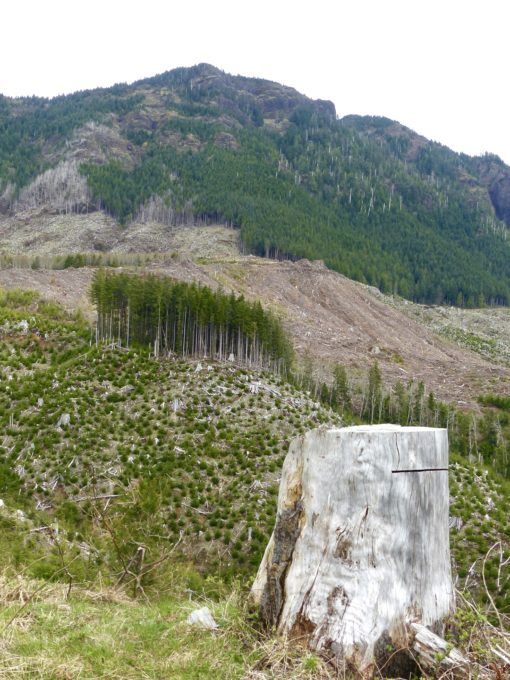
Clearcuts. Photo: Jeffrey St. Clair.
A new report by Friends of the Clearwater documents that 18,000 Idaho roadless acres and 22,000 roadless acres in Montana were logged while presumably protected under the roadless rule. While commercial logging is illegal, there is a loophole that permits logging for “forest health.”
However, where the U.S. Forest Service sees a “health” problem, ecologists such as myself see healthy ecosystems. Forest Service policies are dominated by the industrial forestry paradigm that considers anything that kills tree-except chainsaws — as a problem. Wildfire, bark beetles, root rot, disease, drought, and other natural mortality factors are indicative of functioning forest ecosystems.
Just as wolves or cougars might remove susceptible elk from a herd which in the long run improves the herd’s health; natural tree mortality ultimately creates healthy and resilient forest ecosystems.
The irony is that logging for “forest health” has tremendous negative impacts on the overall function and health of forest ecosystems. Logging roads are a significant vector for the spread of weeds and sediment that clogs streams. Logging fragments forests and removes the biomass (i.e., trees) that are critical wildlife habitat for many species from woodpeckers to native bees. Logging activities disturb and sometimes displace sensitive wildlife like grizzly bears and elk.
Worse for the long-term health of our forest ecosystems, logging indiscriminately removes trees. All forest stands have genetic variability. For example, some trees are more resistant to drought or bark beetles. Some trees grow better under cold temperatures while others are adapted to heat. Logging has been shown to reduce the genetic diversity of our forests, thus reducing the “resilience” of forest ecosystems.
Climate change is imposing many stresses upon our forest ecosystems. Perhaps one tree in a hundred might have a genetic ability to tolerate higher temperatures or extract more moisture from the soil. None of these genetic adaptations are visible to the forester with a tree marking paint gun.
With climate heating, perhaps the most significant value of unlogged and unroaded forests is their storage of carbon. Some 28% of tree carbon is contained in branches, cones, and needles which is typically released when burned in slash piles after logging. Another 53% of the tree’s carbon is released in the manufacturing and milling process. Overall, about two-thirds of the carbon in trees that are logged for lumber quickly become greenhouse gas emissions.
Even forests charred by wildfire store far more carbon than a thinned/logged forest. For instance, in Oregon, more than 35% of the statewide greenhouse gas (GHG) emissions are the result of logging, while wildfires emit about 4-5% of carbon. Across the country, wood product production emits more than 10 times the amount of carbon as do the combined emissions of wildfires and bark beetle.
Keeping carbon in the forest is analogous to keeping fossil fuels in the ground. If we reduced fossil fuel burning and protected our forests from logging, we could take a huge chunk out of our annual carbon emissions to maintain “healthy” forest ecosystems, and ultimately a healthy planet.